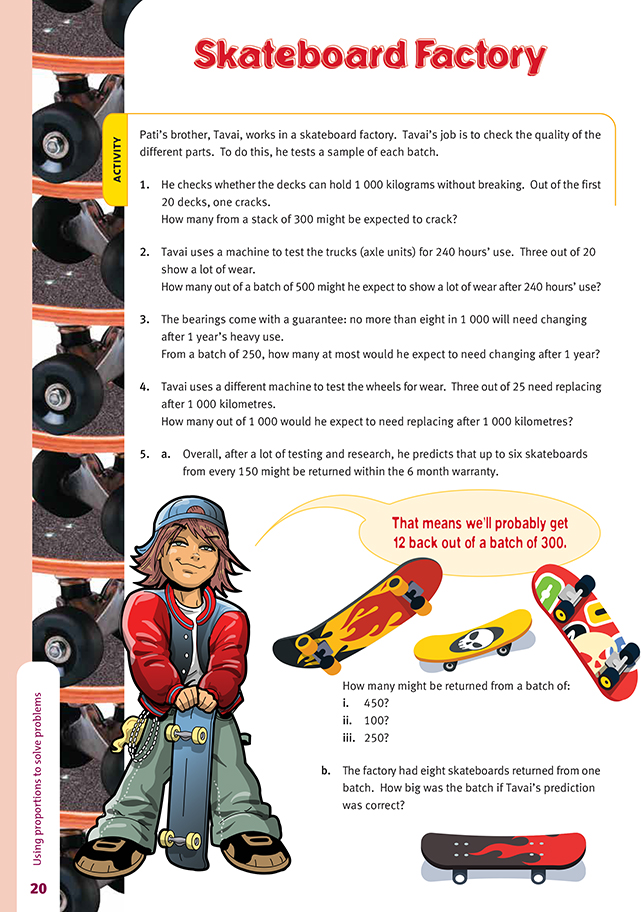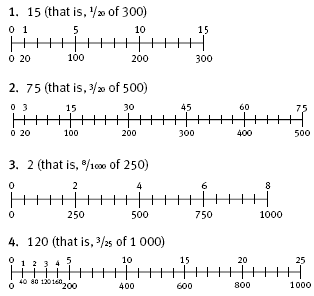This is a level 5 number link activity from the Figure It Out series. It relates to Stage 8 of the Number Framework.
A PDF of the student activity is included.
Click on the image to enlarge it. Click again to close. Download PDF (319 KB)
solve problems involving proportions
FIO, Link, Number, Book Five, Skateboard Factory, page 20
This is an excellent activity to further develop your students’ ideas about proportion. Double number lines are ideal for illustrating equivalent amounts. Some examples are given in the answers for this activity. You can also help the students to see that question 1 involves determining what amount out of 300 is equivalent to 1 out of 20. This can be written as 1/20 = /300. The students could solve this problem in more than one way. For example, they could use the identity principle (encountered in some earlier activities):
1/20 x / = /300, which is 1/20 x 15/15 = 15/300. In other words, 1/20 is the same fractional number as 15/300 because it has been multiplied by 1 in the form of 15/15.
Alternatively, to retain the same proportion, the students could decide what has to happen to the 20 to get 1 (it needs to be divided by 20) and then apply the same operation to the 300, that is, 300 ÷ 20 = 15.
Using the identity principle, question 3 would look like this: 8/1 000 = /250. However, the students may understand this problem better if they reverse the order: /250 = 8/1 000, which then becomes /250 x (4/4) = 8/1 000.
Encourage the students to do most of these calculations mentally and to use the written forms only to record their thinking.
Question 5 has some really thoughtful challenges in it, and it will be interesting to see which information (6/150 or 12/300 ) the students prefer to use to solve 5a i and 5a ii. Questions 5a iii and 5b require even more thought, that is, 6/150 = /250 and 6/150 = 8/ . A really good strategy here would be to use the identity principle
to simplify the 6/150 to 2/50 first (by dividing by 1 in the form of 3/3) and then to reframe the problems as 2/50 = /250 and 2/50 = 8/ respectively.
Answers to Activity
(The double number lines shown here are not essential,
but you may find them helpful.)
5. a. i. About 18
ii. About 4
iii. About 10
b. 200 skateboards

